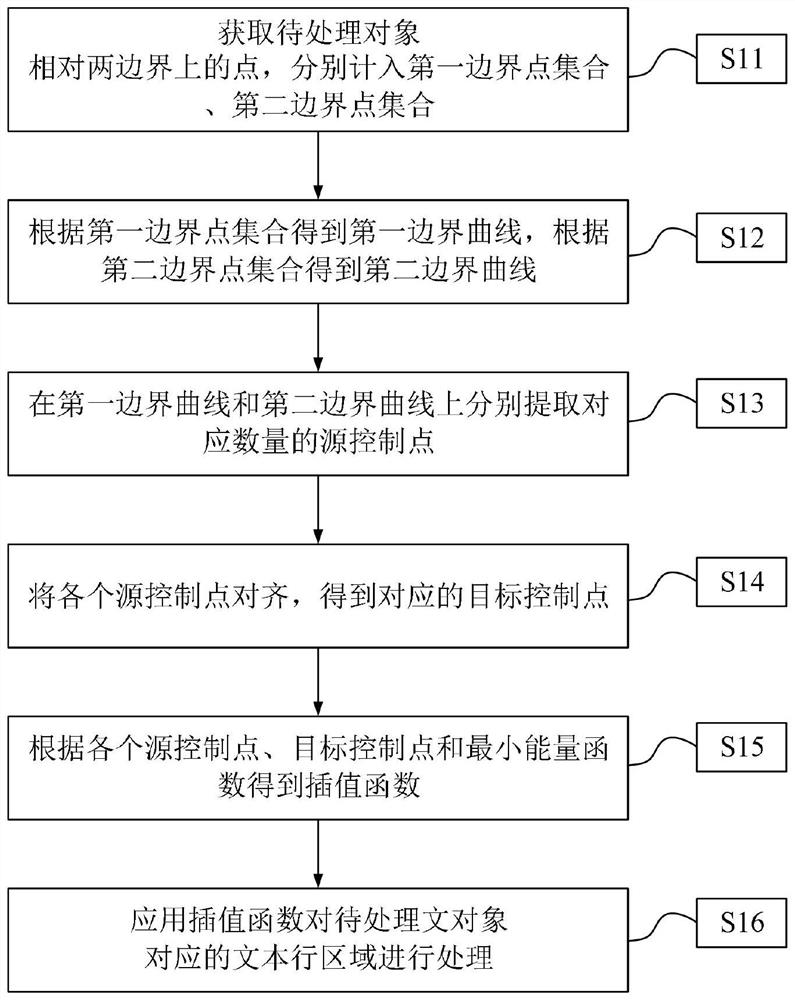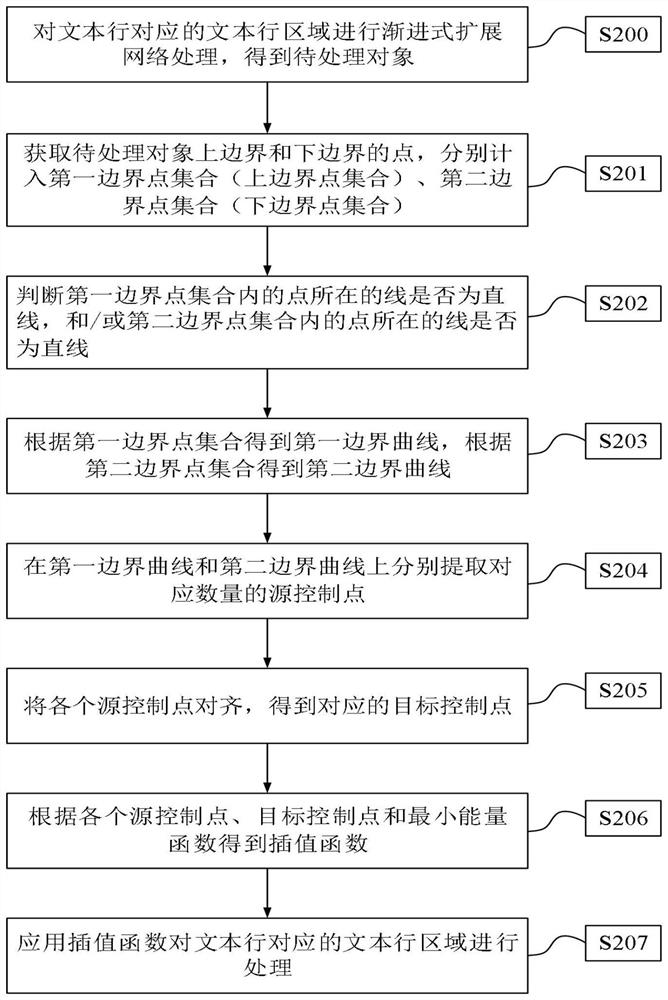Table or text line processing method and device, bill processing method and device and storage medium
A text and table technology, applied in the field of document recognition, can solve problems such as the limitation of training samples for correction effects, and achieve a wide range of effects.
- Summary
- Abstract
- Description
- Claims
- Application Information
AI Technical Summary
Problems solved by technology
Method used
Image
Examples
Embodiment 1
[0061] like figure 1 As shown, Embodiment 1 of the present invention provides a method for processing tables or text lines, including the following steps:
[0062] S11: Obtain the points on the two opposite boundaries of the object to be processed, and count them into the first boundary point set and the second boundary point set respectively;
[0063] S12: Obtain a first boundary curve according to the first boundary point set, and obtain a second boundary curve according to the second boundary point set;
[0064] S13: Extract corresponding numbers of source control points on the first boundary curve and the second boundary curve respectively;
[0065] S14: Align each source control point to obtain a corresponding target control point;
[0066] S15: Obtain an interpolation function according to each source control point, target control point and minimum energy function;
[0067] S16: Apply an interpolation function to process the text line area corresponding to the object ...
Embodiment 2
[0117] like Figures 2 to 4 As shown, in the method for processing tables or text lines provided by another embodiment of the present invention, the objects to be processed are such as image 3 In the text line area shown, the text lines are arranged horizontally; the preset order for processing the text line is the first preset order. The flow chart of the processing method of the table or text line is as follows figure 2 As shown, it specifically includes the following steps:
[0118] S200: Perform progressively extended network processing on the text line area corresponding to the text line to obtain the object to be processed;
[0119] S201: Obtain the points of the upper boundary and the lower boundary of the object to be processed, and count them into the first boundary point set (upper boundary point set) and the second boundary point set (lower boundary point set) respectively.
[0120] will be like image 3 The image of the text line area of the object to be pr...
PUM
 Login to View More
Login to View More Abstract
Description
Claims
Application Information
 Login to View More
Login to View More - R&D
- Intellectual Property
- Life Sciences
- Materials
- Tech Scout
- Unparalleled Data Quality
- Higher Quality Content
- 60% Fewer Hallucinations
Browse by: Latest US Patents, China's latest patents, Technical Efficacy Thesaurus, Application Domain, Technology Topic, Popular Technical Reports.
© 2025 PatSnap. All rights reserved.Legal|Privacy policy|Modern Slavery Act Transparency Statement|Sitemap|About US| Contact US: help@patsnap.com



